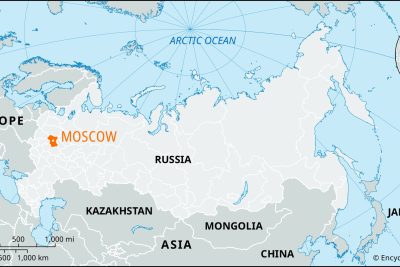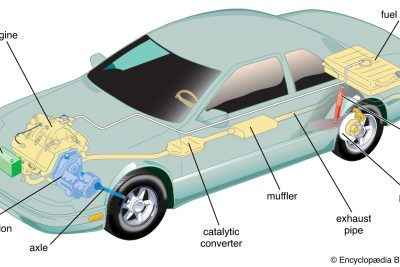
Is Trans Golgi Cisternae essential for protein transport

The trans Golgi cisternae is a crucial part of the Golgi apparatus, playing an essential role in the transport and sorting of proteins and lipids within the cell. Understanding the significance of this structure is vital for comprehending how proteins are modified, sorted, and sent to their designated locations. The Golgi apparatus itself is made up of stacked layers, known as cisternae, which are divided into several sections including the cis, medial, and transface. Among these, the trans Golgi cisternae is of particular interest due to its position at the far end of the Golgi apparatus and its involvement in the terminal stages of processing and trafficking proteins.
Throughout this article, we will delve into the structures and functions of the trans Golgi cisternae, elaborating on its critical contribution to protein transport. We will analyze how the trans network influences cellular functions and the implications of any dysfunction related to this structure. In recent years, ongoing research continues to uncover the intricacies of the trans Golgi network, further solidifying its role as an essential component for proper cellular operations.
- Overview of the Golgi Apparatus
- Structure of the Trans Golgi Cisternae
- Functions of the Trans Golgi Network
- Role of Trans Golgi Cisternae in Protein Transport
- Mechanisms of Protein Sorting in the Trans Golgi
- Importance of Trans Golgi Cisternae in Cellular Functions
- Implications of Trans Golgi Dysfunction
- Current Research on Trans Golgi Cisternae
- Conclusion: The Essential Role of Trans Golgi Cisternae in Protein Transport
Overview of the Golgi Apparatus
The Golgi apparatus is an intricate organelle that orchestrates the modification, sorting, and packaging of proteins and lipids produced in the endoplasmic reticulum (ER). It can be visualized as a shipping and receiving center for the cell, ensuring that cellular products are dynamically and efficiently directed to their final destinations. The apparatus comprises stacked, flattened membrane-bound sacs known as cisternae, which are organized into three main regions: the cis, medial, and trans faces. The cis face is located closest to the ER, receiving newly synthesized proteins and lipids, while the trans face is positioned farthest from the ER and is responsible for exporting these modified products to various cellular locations.
Each section of the Golgi apparatus plays a distinct role, with the trans Golgi cisternae being critical for the final processing and sorting of proteins before their distribution. As an essential part of the trans Golgi network, the trans Golgi cisternae facilitates the terminal stages of protein maturation, ensuring that each molecule is accurately labeled for its intended destination. Therefore, understanding how the Golgi apparatus operates is fundamental to appreciating the role of the trans Golgi cisternae in the transport of proteins and lipids throughout the cell.
Structure of the Trans Golgi Cisternae
The structure of the trans Golgi cisternae is vital for its function in protein transport. This organelle comprises a series of flattened membrane-bound compartments that are closely packed together in a manner that allows for efficient interaction with various proteins and lipids. Each of these cisternae is characterized by a unique composition of enzymes and receptors that facilitate the modification, sorting, and transport processes necessary for cell function.
In the trans Golgi cisternae, the presence of distinct resident proteins enables the proper sorting of cargo molecules. For instance, specific glycosyltransferases are associated with this region, which play a pivotal role in adding carbohydrate moieties to proteins — a process known as glycosylation. This modification is crucial as it determines the ultimate destination of proteins within the cell. The trans face of the Golgi apparatus also features various sorting receptors that recognize cargo proteins and direct them to their respective pathways based on specific signals. Overall, the intricate organization and specialized composition of the trans Golgi cisternae ensure that proteins are efficiently and accurately processed for cellular transport.
Functions of the Trans Golgi Network
The trans Golgi network (TGN) functions as a critical sorting and dispatch center for proteins and lipids destined for various cellular compartments. One of its primary roles is to modify and sort newly synthesized proteins received from the cis Golgi network. These modifications may include glycosylation, phosphorylation, and sulfation, which are essential for determining the functionality and localization of the respective proteins.
Moreover, the TGN is responsible for packaging these modified proteins into transport vesicles. It serves as a hub where proteins are categorized for delivery to designated cellular locations such as lysosomes, the plasma membrane, or secretion outside the cell. The formation of transport vesicles from the trans Golgi cisternae is facilitated by a complex interplay of coat proteins and membrane dynamics, aptly tailored to each specific cargo type. This precise sorting is paramount for maintaining cellular homeostasis and function, as it directly influences the availability and activity of key proteins within the cell.
Role of Trans Golgi Cisternae in Protein Transport
The role of the trans Golgi cisternae in protein transport cannot be overstated. It acts as the final station for proteins being processed and directed to their respective destinations within the cell. Each protein, based on its unique signals and modifications, is selectively packed into vesicles that bud off from the trans Golgi, ensuring that it is delivered accurately and efficiently. This selectivity is vital, as misdirected proteins could lead to detrimental effects on cellular function.
Proteins destined for secretion are encapsulated in secretory vesicles, which then travel towards the plasma membrane for release. Similarly, proteins meant for lysosomes or endosomes are directed towards specific intracellular organelles. The ability of the trans Golgi cisternae to communicate and interact with other organelles is essential for regulatory functions within the cell. By ensuring the correct delivery of proteins, the trans Golgi cisternae maintains the intricate balance of cellular operations, allowing for effective functionality in various cellular processes.
Mechanisms of Protein Sorting in the Trans Golgi
The mechanisms of protein sorting within the trans Golgi cisternae are complex and involve a combination of intrinsic and extrinsic factors. Proteins are sorted based on specific signals present within their structure, such as short peptide sequences or post-translational modifications. These signals are recognized by sorting receptors within the TGN, which then facilitate the selective packaging of proteins into transport vesicles.
- Signal Peptides: Certain proteins carry specific signal peptides that dictate their course through the Golgi apparatus and their eventual destination.
- Membrane Lipids: Lipid composition also plays a vital role, as specific lipids can preferentially engage with certain proteins to guide them toward their intended pathways.
- Glycosylation Patterns: Post-translational modifications such as glycosylation serve not only to modify protein structure but also provide unique identifiers that dictate protein sorting.
Furthermore, the physical properties of the vesicles themselves—size, shape, and surface characteristics—are influenced by factors such as the cargo they carry and the proteins involved in vesicle formation. The coordinated interaction between these various elements underscores the sophisticated nature of the sorting mechanisms at play within the trans Golgi cisternae, emphasizing its central role in the overall process of protein transport.
Importance of Trans Golgi Cisternae in Cellular Functions
The importance of the trans Golgi cisternae in cellular functions extends beyond mere protein transport. It plays a critical role in the regulation of key cellular processes, including cell signaling, metabolism, and maintaining cellular homeostasis. By correctly trafficking proteins and lipids, the trans Golgi cisternae ensures that cells can respond effectively to external stimuli and maintain their internal environment.
Additionally, the trans Golgi network is involved in lipid metabolism and synthesis, producing essential lipids for membrane biogenesis and repair. The transport of membrane proteins is also facilitated by the trans Golgi, which contributes to the formation and maintenance of diverse membrane structures across the cell. By ensuring that these various components reach their destinations, the trans Golgi cisternae is essential for the overall integrity and functionality of the cell.
Implications of Trans Golgi Dysfunction
Dysfunction within the trans Golgi cisternae can have significant implications for cellular health and functionality. When the processes of sorting and transport are compromised, it can lead to the accumulation of mislocalized proteins and lipids, impacting essential cellular operations. Such dysfunction may contribute to a range of diseases, including cystic fibrosis, diabetes, and neurodegenerative disorders.
For instance, mutations that affect the proteins responsible for vesicle budding or targeting can lead to ineffective processing of secretory proteins, resulting in their retention within the Golgi or the incorrect delivery to cellular compartments. This misrouting can disrupt cell signaling pathways and metabolic processes, highlighting the essential role the trans Golgi cisternae plays in maintaining cellular health.
Current Research on Trans Golgi Cisternae
Ongoing research into the trans Golgi cisternae continues to reveal new insights into its complex functions and contributions to cellular processes. Recent studies have focused on elucidating the specific mechanisms involved in protein sorting and delivery, as well as the interaction of the TGN with other organelles within the cell. Understanding these mechanisms can provide valuable insights into the development of therapeutic strategies for diseases associated with Golgi dysfunction.
Additionally, researchers are exploring the impact of various external factors, including stress conditions and changes in nutrient availability, on the performance of the trans Golgi. By examining these aspects, scientists aim to uncover the adaptability of the Golgi apparatus and how it responds to fluctuations in cellular demands. Overall, ongoing research is expected to further elucidate the critical roles of the trans Golgi cisternae in protein transport and cellular functions.
Conclusion: The Essential Role of Trans Golgi Cisternae in Protein Transport
In conclusion, the trans Golgi cisternae play a vital and essential role in the mechanism of protein transport within the cell. As the final checkpoint for the processing, sorting, and distribution of proteins produced in the endoplasmic reticulum, the trans Golgi is crucial for maintaining cellular integrity and function. By ensuring that proteins reach their destinations accurately, the trans Golgi cisternae contribute significantly to overall cellular operations, influencing various processes from metabolism to signaling.
Furthermore, increased understanding of the trans Golgi network's functions offers insights into the implications of its dysfunction, which can lead to serious health conditions. Continued exploration of the underlying mechanisms of protein sorting and transport within the trans Golgi will ultimately aid in the advancement of therapeutic approaches for treating related diseases. As a key component in the cellular machinery, the trans Golgi cisternae remains an area of significant scientific interest, underscoring its essential role in the complex world of cellular biology.
Did you find this article helpful? Is Trans Golgi Cisternae essential for protein transport See more here Education.
Leave a Reply






Related posts